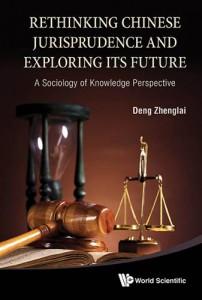This book is an antecedent study on the task facing Chinas legal science, more strictly speaking Chinas legal philosophy, in post-Cold War world structure. In broader terms, this is an academic study of Chinas own and future in the world structure. The author believes that from 1978 to 2004, in spite of its great achievements, Chinas legal science has at the same time had some of its grave problems being exposed. A fundamental problem is its failure to provide a Chinese legal ideal picture as the standard of and direction for evaluating, assessing and guiding Chinas law/legal development. This is an age of law without Chinas own ideal picture(s). However, why has China failed to have its own legal ideal picture(s)? Apparently this question in and of itself implies a question, both more directly and fundamentally, of Chinas legal science, namely why Chinas legal science has failed to provide Chinas own legal picture(s)? Or, as an internal critical approach may suggest (namely to critique Chinas legal science from the perspective of its promised objectives), where is Chinas legal science heading? Based on this, this book attempts to expound a standard to evaluate Chinas legal science through a theoretical discussion of this issue, and to further explore the possible direction for Chinas legal science beyond this age.Contents:IntroductionChinas Legal Science and the Paradigm of Modernization A Critique and Reflection on the Paradigm of Modernization The Absence of in Chinese Legal Scholarship: A Case Study of the Legal Research on Rights Further Critical Examination of Chinas Legal Science (1): A Critique of Liang Zhipings Legal Culturalism Further Examination of Chinas Legal Science (Part 2): A Critique of Su Lis Indigenous Resourcism Some Tentative Concluding RemarksReadership: Researchers, professionals, undergraduate and graduate students interested in Chinas legal science and legal philosophy studies.
Rethinking chinese jurisprudence and exploring
Sobre
Talvez você seja redirecionado para outro site












